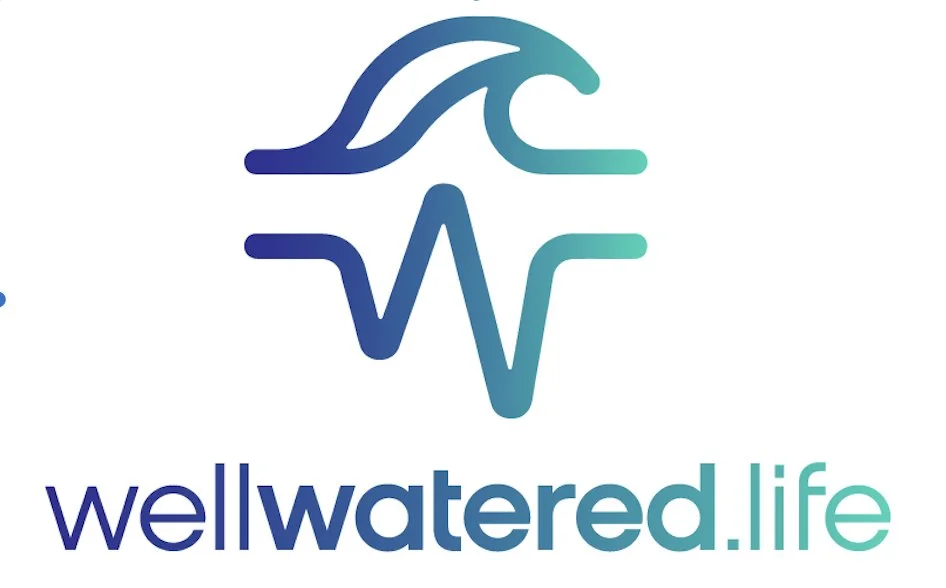Blue Breaks: The Productive Midweek Pause
There’s something about the middle of the week that invites reflection.
Maybe it’s the rhythm of a world that’s been pushing forward since Monday. Maybe it’s the quiet fatigue that creeps in—not the dramatic kind, but a subtle inner fraying. Not quite burnt out, but not fully fresh either.
In this season of stepping back from full-time work, I’ve found myself noticing more. Especially when I slow down near water.
A short pause. A moment of quiet. A walk to the shore, or just watching raindrops trace lines down the window.
These moments have become more than calming—they’ve become clarifying. I call them blue breaks.
What’s a Blue Break?
A blue break is a short, intentional pause—usually midweek—where you observe or interact with water to reset your mind, body, and spirit. That might mean sitting by the ocean, walking along a creek, staring at the ripples in a pond, or even watching a video of rainfall or slow-motion underwater scenes.
It sounds unproductive. It might even feel indulgent. But here’s the surprising truth:
Taking a blue break may be one of the most productive things you do all week.
The Science of Still Water & Sharp Minds
Research in environmental psychology has shown that natural environments have a restorative effect on our attention. According to Attention Restoration Theory (Kaplan & Kaplan, 1989), being in nature—especially near water—provides 'soft fascination,' a type of stimulus that gently holds our attention without requiring active effort, allowing the brain’s executive functions to recharge.
Marine biologist Wallace J. Nichols, in his book Blue Mind, describes the calm, meditative state we enter when near water as the 'blue mind state'—a neurological shift that lowers cortisol levels, slows heart rate, and promotes feelings of peace and well-being.
Even short exposure makes a difference. A 2010 study published in Health & Place found that people who lived closer to the coast reported significantly better mental health than those inland (White et al., 2013). Another study showed that 20 minutes in nature could lower stress hormones and significantly improve focus (Hunter et al., 2019).
My Midweek Reset
For me, a blue break often means stepping away from the desk and walking down to the beach. Other days, it’s a few minutes of stillness watching the rain hit the window. There’s something in the gentle motion—the rhythm of ripples or waves—that resets something deeper than my to-do list.
Afterwards, I don’t just feel better—I work better. Ideas flow more easily. My conversations are calmer. I write with more clarity. It’s a reset not only for the mind, but the mood, the spirit, even the body.
No Ocean? No Problem.
While immersing in natural blue spaces is powerful, research shows that even virtual exposure has benefits. A study published in the journal Environment and Behavior (2017) found that watching nature videos, especially those featuring water, significantly reduced anxiety and promoted restoration compared to urban scenes.
So if you’re working inland or in a high-rise office, you’re not excluded. Pull up a YouTube clip of flowing water. Set a calming ocean video as your screen break. Take a shower without rushing. Observe a fountain or indoor aquarium. Your nervous system will thank you.
How to Take a Blue Break
Here’s a simple practice to try:
1. Choose a time—preferably midweek.
2. Step away from work for 10–30 minutes.
3. Find water: ocean, river, bath, rain, video, photo, even memory.
4. Observe. Don’t try to do anything else. Let your mind slow down.
5. Notice how you feel afterwards. Mood? Focus? Breath?
Repeat weekly. Or more.
Final Thought
We don’t need to wait for a weekend retreat or a full vacation to experience rest. A blue break is available to almost anyone, almost anywhere. It’s not indulgent—it’s intelligent. A small investment that can lead to sharper focus, calmer thinking, and more creative energy.
Try one over the next week. And if you already have a water ritual—drop into the comments and tell us what works for you.
Let’s make this rhythm part of how we thrive.
If you’re looking for a simple way to start, I’ve begun practicing something I call Waterful Wednesdays—a weekly rhythm where we intentionally take a short break to observe, immerse, or reflect with water. You can read more about it here: https://www.wellwatered.life/about-waterful-wednesdays
References
Nichols, W. J. (2014). Blue Mind: The surprising science that shows how being near, in, on, or under water can make you happier, healthier, more connected, and better at what you do.
Kaplan, R., & Kaplan, S. (1989). The Experience of Nature: A Psychological Perspective.
White, M. P., Alcock, I., Grellier, J., et al. (2013). Coastal proximity, health and well-being: results from a longitudinal panel survey. Health & Place, 23, 97–103.
Hunter, M. R., Gillespie, B. W., & Chen, S. Y. (2019). Urban nature experiences reduce stress in the context of daily life based on salivary biomarkers. Frontiers in Psychology.
Van den Berg, A. E., et al. (2017). Nature imagery in virtual environments reduces stress and anxiety. Environment and Behavior, 49(9), 1080–1102.
Samways, D. (2023). The Natural Advantage: Harnessing our environment to think clearly, create freely, and lead with purpose.


